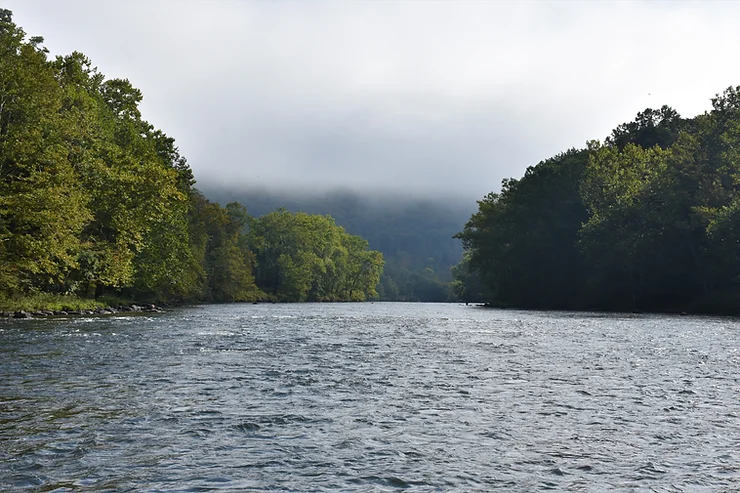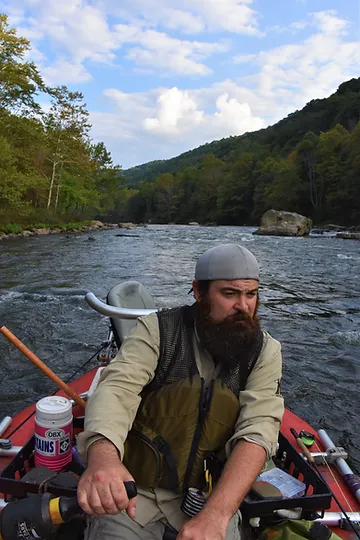Fishing the Yough

From its beginnings in Preston County, WV, to where it enters the Monongahela River near McKeesport, PA, the Youghiogheny River goes against the grain. The Yough, for short, is a 134-mile river that travels in a primarily northern direction. In fact, Youghiogheny is an Algonquin word meaning “a stream flowing in a contrary direction.” But there’s nothing contrary about the fishery that the Yough has become over the years. When it comes to trout and smallmouth bass, it’s arguably the best in the state.
Recently I had the opportunity to fish the Yough, which is best known for its trout population, some of which grow to substantial size. The river did not disappoint. Although conditions were less than ideal – hot and sunny with low water levels – we moved a number of trout, including several big ones.
I was fishing with Wilderness Voyageurs based in Ohiopyle (wilderness-voyageurs.com), who teamed me up with expert guide Doug Matthews. The Yough is a tricky river to navigate, with numerous currents and large boulders, but Doug made it look easy, and made the float smooth and comfortable. Only once did I almost tumble into the drink and it was my own dang fault. I’d had no trouble at all maintaining my balance against the lean bar all day, so when Doug warned me to brace myself for some upcoming whitewater, I got a little cocky and didn’t pay much mind. One sudden shift in the current sent me tumbling until my nose (and camera) ended up over the edge of the boat and so close to the water I could smell it.

The Yough has had its share of troubles over the years. Throughout its history, the river has gone from a pristine to polluted to recovering waterway. The Mountain Watershed Association was formed in 1994 to fight (and eventually defeat) a proposed deep mine in the Indian Creek Watershed, a sub-basin of the Youghiogheny River.
More recently, Marcellus Shale has put the Yough at risk. Fracking, the process used to fracture the shale bedrock around the well bore in order to access the natural gas, requires 3 to 7 million gallons of water per well each time the process is performed. Each well can be “fracked” multiple times and well pads typically support at least three wells. Do the math. That’s a heck of a lot of water, and it has to come from somewhere.
Perhaps the greater threat, though, is the construction of well pads, which require at least three acres but typically consist of 20 to 25 acres. Many of these well pads are cropping up in heavily forested areas, which means land must be cleared and access roads built. The Nature Conservancy predicts that over 70% of Pennsylvania’s remaining brook trout watersheds will likely see Marcellus gas development – some estimate 60,000 shale gas wells by the year 2030. This could have a major impact on the cold headwater streams that feed bigger waters such as the Yough.
Fortunately, we’re more aware of the effects of humankind on ecosystems now than we were in the past. One success story-in-progress is the Casselman River, which empties into the Yough near Confluence. Reduction of acid mine drainage over the past 20 years has led to increased alkalinity in Section 02 of the Yough, and the result has been a much improved fishery from there downstream.
Consider these numbers from the Executive Summary for Youghiogheny River Fisheries Management Plan 2015:
2012 samples of smallmouth bass from Section 02, 03, and 04 all contained a viable quality component whereas samples done in 1989 and 1994 did not.
The Upper Allegheny River, often considered one of best fisheries in the state, contains a quality smallmouth bass population with the average catch of bass (12 inches) at 6/hr. The 2012 and 2014 Youghiogheny River combined Sections 02-06 was about twice that at 12.06/hr.
In 2012, two to four times more rainbow trout were surveyed as compared to 1994. In 2012, the average length of a rainbow was 15 inches. In 1994, the average was only 9.4 inches.
In 2012, the average length of brown trout captured was 16.1 inches. In 1994, the average was 12.3 inches.
There are 27 miles of coldwater, fingerling trout management and stocking, from Section 02 to 05. Coldwater releases from the Youghiogheny River Lake dam have created a year-round fishery that is steadily improving with each passing season.
During my float trip on the Yough, I encountered numerous big trout, including one brown of monstrous proportions. We got into fish almost immediately after launch and stayed on them clear to pullout. In between, we encountered a mix of riffles, runs, and slow moving pools, all of which held trout. I certainly caught my share of fish. The biggest was a robust 17-inch rainbow that inhaled a grasshopper pattern placed perfectly in a calm piece of pocket water behind a boulder as we were shooting through some rapids.
Prior to that, though, I missed a 20-inch brown and a 20-inch rainbow on back to back casts. Only thing I can figure is that, due to the low water and bright sun, they spotted us at the last minute and changed their minds. Despite the conditions, I still caught quite a few fish, which only proves that even a bad day fishing the Yough is better than fishing almost anywhere else. It’s now our responsibility to protect the resource and make sure it stays that way.
Trip Notes
Wilderness Voyageurs
800-272-4141
Food and Lodging:
Stonehouse Restaurant and Inn
724-329-8876
Excellent food and Victorian décor rooms located in Farmington, PA.
Tackle:
9-foot, 6-weight fly rod will handle almost all situations. 3x-5x leaders and tippet depending on water levels and conditions. Best technique is to fish a single or double drop nymph rig under a big, attractor-style dry fly.
Fly Shop:
Wilderness Voyageurs has all the flies and fishing gear and advice you’ll need at their store in Ohiopyle.
For the Family:
Plenty of biking and walking trails available with parking near the river in Ohiopyle. Wilderness Voyageurs also offers rafting trips and other adventures.
Information:
Contact the Laurel Highlands Visitors Bureau, 724-238-5661.
Did You Enjoy Reading About Fishing The Youghiogheny River?
Stay up to date with the Dark Skies Fly Fishing monthly newsletter for free and receive the latest posts in fly fishing news, tricks, tips, and techniques, stream reports, as well as updates on new flies added to the Online Store and exclusive discounts!
Sign Up Now